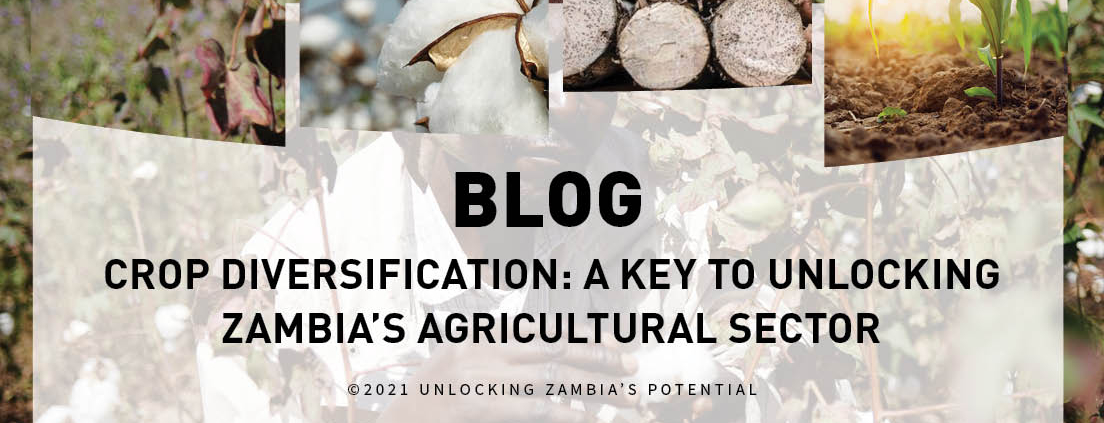Zambia is a landlocked but linked country with a large landmass of 752,600 km2 out of approximately 58% of the arable land is classified as medium to high potential for agricultural production. Zambia’s economy has heavily depended on the mining sector contributing approximately 77% of its export value but fluctuations in commodity prices on the international markets makes the sector non–predictable. Therefore, Government’s strategic focus must now embrace economic diversification and reinvigorate the agriculture sector as one of key drivers of economic growth.
The agriculture sector plays a critical role in economic growth and job creation for the rural poor population despite being underdeveloped. Agriculture contribution to Gross Domestic Product (GDP) averaged 9.8 per cent in the period 2006 -2015. The last few years saw a significant rainfall variability that impacted negatively on rain-fed production systems for smallholder farmers and commercial irrigated agriculture due to disruptions in the energy sectors leading to a fluctuating and low sector GDP contribution mainly due to crop failures in 2015 and 2018. However, despite the sector’s negative contribution recently, it is projected that agriculture GDP will increase even further this year due to the favourable weather and bumper harvests recorded.
Agricultural Development and Strategic Actions
Since Zambia’s independence, the agricultural revolution has been driven by state interventions mainly focusing on input supply and centred on maize production hence the failure to deliver a diversified food system which has resulted in poverty, malnutrition, vulnerability to drought, pests and diseases due to climate change and weather variability.
Whilst the Zambian National Agricultural Policy (NAP-2004) and the Revised National Agricultural Policy (RNAP-2016) recognizes crop diversification as one of the key measures to achieving food and nutrition security and agricultural transformation, challenges related to mono-cropping and a policy exercise that is aligned to promote maize production limits the extent of crop diversification agenda. Crop diversification is pivotal in addressing food and nutrition security, mitigating risks of crop failure and market uncertainties, mitigating price risks, and important in stabilizing, diversifying and enhancing farm incomes. Furthermore, this will result in the establishment and support to private sector-led manufacturing industries to produce inputs (seed, fertilizer and agrochemicals) and mitigate natural shocks such as drought by adopting climate-smart agriculture technologies.
The Government through the Ministry of Agriculture is expected to accelerate the finalization of the Crop Diversification Strategy which has the potential to spur the agricultural industry through value addition (agro-processing), poverty reduction, sustainable environmental management and a sustainable nutritionally diversified food system. For Zambia to achieve this, an increase in the availability and access to diversified seed types through a strongly supported seed policy framework is a must. Zambia’s current seed quality assurance system is one of the best in Africa encompassing the Plant Variety and Seeds Act (CAP 236), Plant Breeders’ Rights Act No 18 of 2007 and their respective regulations. The affiliations to international bodies like International Seed Testing Association (ISTA) and the Organization for Economic Co-operation and Development (OECD) has further strengthened Zambia’s position to deliver quality diversified seed types. These measures are capable of delivering a system that is capable of supporting the Government’s crop diversification agenda especially when the country enjoys a favourable climate and policy environment.
In addition to the production of diversified crops, value addition through the establishment of processing hubs and complete transformation of Farmer Input Support Programme (FISP) to Electronic voucher System allowing farmers to have a choice on available diversified seed types, is critical to a successful crop diversification agenda. Furthermore, the Food Reserve Agency need to rethink their marketing strategy by increasing the number of strategic crops to purchase, in line with SI No.73 of 2012, to include crops such as rice, cassava, soya beans and other food legumes to support the crop diversification agenda.
The Policy Monitoring and Research Centre (PMRC) anticipates that the Government through the Ministry of Agriculture will promote strategies for agriculture that will lead to utilization of a variety of food crops, embrace value addition and allied products to increase the geographical space in terms of nutrition and food security for Zambia.




